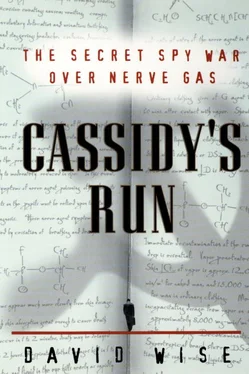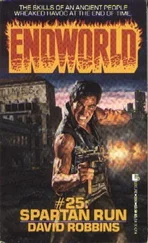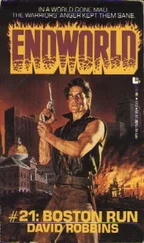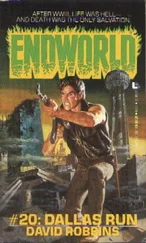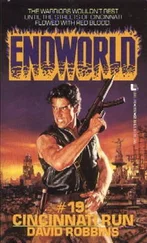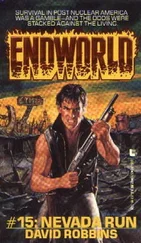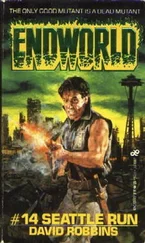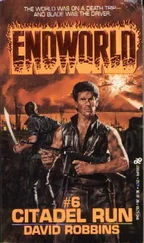Cholinesterase neutralizes the buildup of acetylcholine, a nerve-impulse transmitter, in the body. Acetylcholine must be present for an impulse, or message, to jump from one nerve ending to the next. This is how humans are able to think, breathe, and move.
But when nerve gas inhibits the production of cholinesterase, nothing neutralizes the acetylcholine, and the nervous system in effect runs on fast-forward, spinning wildly out of control. As one government official put it, “All three nerve gases work by making people forget to breathe.” The respiratory muscles convulse, and death follows, generally from asphyxiation. [3] Atropine, a derivative of the deadly belladonna plant, is a principal antidote to nerve gas. Belladonna, which means “beautiful lady” in Italian, is a highly poisonous plant of the nightshade family with purple or red flowers. Another antidote is 2-PAM, pralidoxime chloride, one of a class of chemicals known as oximes that restore the normal action of cholinesterase. 2-PAM, however, is ineffective against soman (GD) after two minutes. Both atropine and 2-PAM, along with an injector, are contained in the MARK-I kits provided to U.S. troops.
The term nerve gas is a misnomer, since the chemicals are actually liquids delivered in a fine mist by an aerosol spray. Sarin has perhaps become the best known nerve gas, in part because it was used by the Aum Shinrikyo cult in a terrorist attack in the Tokyo subways during the morning rush hour on March 20, 1995, killing twelve persons and injuring five thousand. (Two months later, the cult leader, Shoko Asahara, was captured and charged in the attack along with forty of his followers.)
All nerve gases are organophosphorous compounds. Although they are lethal, they have different properties and varying degrees of effectiveness. Some, for example, require smaller doses than others to kill people. Some nerve gases penetrate clothing better than others. Scientists also speak of “persistent” or “nonpersistent” agents. That is, some more-volatile gases, such as sarin, evaporate quickly and are considered nonpersistent. Others, such as VX, evaporate much more slowly and can remain in an area, still deadly, for a week or two.
Sarin (GB) is a colorless, odorless liquid. A 1996 Material Safety Data Sheet issued by the army’s Chemical and Biological Defense Command at Edgewood states that “effective dosages for vapor are for exposure durations of 2-10 minutes.” [4] The army’s chilling official description of sarin goes on to warn: Symptoms of overexposure may occur within minutes or hours, depending upon dose. They include: miosis (constriction of pupils) and visual effects, headaches and pressure sensation, runny nose and nasal congestion, salivation, tightness in the chest, nausea, vomiting, giddiness, anxiety, difficulty in thinking and sleeping, nightmares, muscle twitches, tremors, weakness, abdominal cramps, diarrhea, involuntary urination and defecation. With severe exposure symptoms progress to convulsions and respiratory failure.
Soman (GD) is described as a “colorless liquid with a fruity odor. With impurities, amber or dark brown with oil of camphor odor.” Like sarin, it can kill in two to ten minutes. VX is odorless, but, unlike sarin and soman, it is viscous, with the consistency of motor oil. It can be colorless or slightly yellowish. One drop on the skin kills. The army’s safety-data sheet warns: “Death usually occurs within 15 minutes after absorption of a fatal dosage.” [5] Scientists express the degree of deadliness of a nerve gas with the term LD (for lethal dose) 50, meaning the amount that will kill 50 percent of those exposed to it. The smaller the amount needed to reach LD50, the stronger the agent. For VX absorbed through the skin, the LD50 is ten milligrams for a 154-pound man. For skin exposure to soman, the LD50 is 350 milligrams.
Bernard Zeffert, a former chemist at Edgewood, perfected VX for the army. “We got VX from the Brits who created it,” he said. “When people in the process lab were gearing up for production of VX, they got poor results.” Zeffert and Jefferson C. Davis, Jr., tackled the problem. “We conducted an experiment and published a paper, in-house only, on the bond energies of phosphorus and sulphur.”
As a result of their work, Zeffert and Davis received the patent, along with the army, for a link in the process of making a precursor of VX. Davis, who had a master’s degree in chemistry when he entered the army in 1954, was sent to Edgewood. In his early twenties, he suddenly found himself making nerve gas. “Among the GIs there was a sort of black humor about it,” Davis recalled. “We’ll do what the army wants for two years.”
The scientists on the permanent staff of Edgewood Arsenal had a pleasant life. Their laboratories were located on a scenic, wooded peninsula that stretches into the northern end of the Chesapeake Bay, south of Havre de Grace. They lived in nearby towns like Bel Air, comfortable suburbs of Baltimore. They married, raised children, and went to work in their labs, making some of the deadliest concoctions known to humankind. Few would admit to any qualms about their work. Like some nuclear scientists, many found justification in the fact that the Soviet Union also had chemical and biological weapons. Soviet scientists thought much the same way.
“By and large, it was a ‘we better keep up’ kind of mentality,” recalled Davis, later the chairman of the chemistry department at the University of South Florida. “We had a sense of duty at the time.” But Davis said his own views changed. “The more you learn, the more you wonder about the saneness of it all. I think later a lot of people were not happy that that sort of stuff should be developed or used. I feel we should destroy the reserves of nerve gas and never use it.” But the disenchantment Davis felt later was not typical. Many of the scientists at Edgewood argued that using nerve gas was actually a more humane and sure way to kill enemy soldiers than leaving them bleeding to death on a battlefield.
When the Edgewood scientists retired, many continued to live around Bel Air as they slipped into their seventies and eighties. They remained a close-knit group.
Benjamin L. Harris had been technical director of the army’s chemical labs for eleven years when he left Edgewood in 1981. The retired nerve-gas scientists, he said, formed a club called the GOBs, for Good Old Boys. In the early 1990s “the Good Old Boys still met in Edgewood every Friday at Vitali’s restaurant, in a motel at the junction of Route 24 and I-95.” By 1997, their ranks had dwindled to four. “Now they meet at Denny’s, across the road.”
Not all the ex-scientists at Edgewood joined the GOBs. Saul Hormats was definitely not a member of the club. White-haired and bespectacled, in his mid-eighties when interviewed for this book, Hormats was a maverick who had broken with his fellow scientists and publicly opposed the development and use of nerve gas. Born in Troy, New York, he grew up in Baltimore, earned a chemical-engineering degree at Johns Hopkins University in 1931, and three years later started at Edgewood. He worked there for thirty-seven years, serving as deputy director and then director of development, before he retired in 1972. Not one given to false modesty, he described himself as “the godfather of chemical warfare in the United States.”
Hormats explained how Edgewood was organized into a research group, which worked on the nerve gases, and a development section, which designed a production facility. “Production plants were scattered around the country, one at Pine Bluffs, Arkansas, for example.
“We ran toxicity tests on animals—mostly mice and dogs. It was done by our medical division. We had to make damn sure the stuff was stable, effective, not flammable, et cetera. It was then put into a one-fifty-five-millimeter shell, and sometimes an eight-inch shell, or a four-point-two mortar shell. All with GB.” [6] In addition, the army in the mid-1960s had a wide variety of weapons capable of delivering both GB and VX, including 105 mm howitzers, 105 mm rocket launchers, and Honest John and Sergeant missiles. The air force had thousand-pound bombs containing 198 gallons of GB.
Читать дальше
